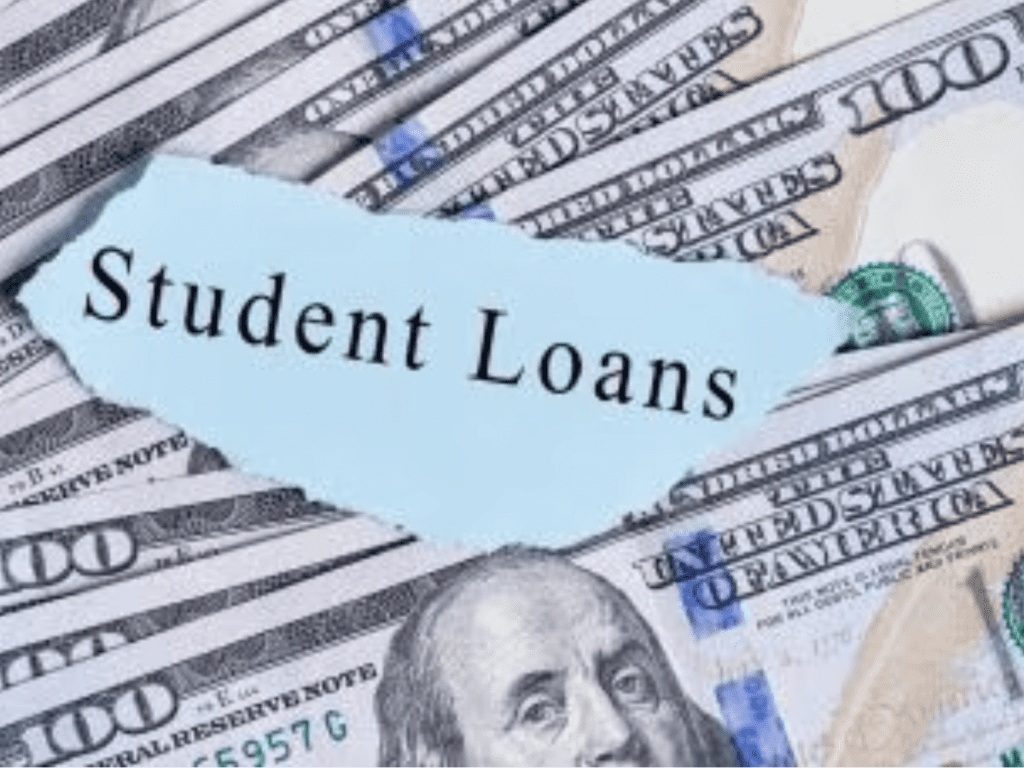Introduction
Student loan debt can be a significant financial burden, and many borrowers struggle to meet the repayment demands. However, you don’t have to face this challenge alone. With a proactive approach and understanding of the options available, you can take control of your student loans and avoid default. This guide provides practical advice to help you manage your student loan repayments effectively.
Understanding the Consequences of Default
Before diving into strategies for managing student loan debt, it’s essential to understand the consequences of falling into default. Default occurs when you fail to make your loan payments for an extended period. The specific timeline can vary, but for federal student loans, default typically occurs after 270 days (about nine months) of missed payments.
The consequences of default can be severe and far-reaching:
- Damaged Credit: Defaulting on student loans can significantly hurt your credit score. A poor credit score can make it challenging to obtain other types of credit, including credit cards, mortgages, or car loans.
- Wage Garnishment: The government may garnish your wages, meaning a portion of your paycheck will be withheld to pay off your loan. This can make it even more difficult to cover daily living expenses.
- Tax Refund Seizure: The government can also seize your federal tax refunds and apply them to your loan balance.
- Loss of Eligibility for Federal Benefits: Defaulting can cause you to lose access to federal student aid, such as eligibility for further loans or grants.
- Legal Action: In some cases, the government or loan servicer may take legal action to collect the debt, which could lead to additional fees and complications.
Know Your Loan Types
Before you can manage your student loan repayments, it’s essential to understand the type of loans you have. There are two main categories:
- Federal Student Loans: These loans are issued by the U.S. Department of Education and include Direct Loans, Federal Family Education Loans (FFEL), and Perkins Loans. Federal loans tend to offer more flexible repayment options and protections than private loans.
- Private Student Loans: These loans are issued by private lenders like banks, credit unions, and other financial institutions. Repayment options for private loans may be more limited, and the interest rates may be higher than those for federal loans.
Once you know the types of loans you have, you can determine the best strategies for repayment.
Step 1: Contact Your Loan Servicer
If you’re struggling to make payments, one of the first things you should do is contact your loan servicer. Loan servicers are companies that manage your loans, and they can help you explore your repayment options.
Your servicer may offer several options to make repayment more manageable, including:
- Deferment or Forbearance: These are temporary pauses in your loan payments. During deferment, interest on subsidized loans may not accrue, but forbearance may lead to interest accumulation.
- Repayment Plan Modification: You can change your repayment plan to one that better fits your current financial situation. For instance, switching from a standard repayment plan to an income-driven repayment plan can lower your monthly payments based on your income.
- Consolidation or Refinancing: Consolidating or refinancing your loans may allow you to combine multiple loans into one, possibly resulting in lower monthly payments or better interest rates.
Step 2: Explore Income-Driven Repayment Plans
Income-driven repayment (IDR) plans are one of the best tools for borrowers struggling with student loan payments. These plans are designed to adjust your monthly payment based on your income and family size, which can provide significant relief if your earnings are lower than expected.
There are several income-driven repayment plans for federal student loans:
- Income-Based Repayment (IBR): Your monthly payment is generally capped at 10% or 15% of your discretionary income, depending on when you took out the loan. After 20 or 25 years, any remaining loan balance may be forgiven.
- Pay As You Earn (PAYE): Similar to IBR, but payments are capped at 10% of your discretionary income. This plan offers forgiveness after 20 years of qualifying payments.
- Revised Pay As You Earn (REPAYE): Like PAYE, but with slightly different eligibility requirements. REPAYE offers forgiveness after 20 years for undergraduate loans and 25 years for graduate loans.
- Income-Contingent Repayment (ICR): This plan offers a monthly payment based on your income and family size. Your payment will be recalculated each year, and any remaining balance is forgiven after 25 years.
Each of these plans has pros and cons, so it’s important to evaluate which one best fits your financial situation.
Step 3: Consider Refinancing Your Loans
If you have private loans or a combination of private and federal loans, refinancing may be an option. Refinancing involves taking out a new loan to pay off your existing loans, usually at a lower interest rate. Refinancing can lower your monthly payments and save you money over the life of the loan.
However, refinancing federal loans with a private lender means you’ll lose access to federal protections, such as income-driven repayment plans and loan forgiveness options. Therefore, refinancing is most beneficial if you have private loans or federal loans that don’t qualify for income-driven plans or if you can afford to make the payments without needing these protections.
Step 4: Investigate Loan Forgiveness Programs
Loan forgiveness programs are designed to reduce or eliminate your remaining student loan balance after a certain number of years of qualifying payments. Several programs are available for federal student loan borrowers:
- Public Service Loan Forgiveness (PSLF): If you work in a qualifying public service job, such as a government agency, nonprofit organization, or teaching, you may qualify for forgiveness after 120 qualifying payments (about 10 years).
- Teacher Loan Forgiveness: Teachers who work in low-income schools may qualify for forgiveness of up to $17,500 in federal student loans after five years of teaching service.
- Income-Driven Repayment Forgiveness: As mentioned earlier, if you are enrolled in an income-driven repayment plan, you may be eligible for forgiveness after 20 or 25 years of qualifying payments.
To qualify for these programs, you must meet specific requirements and submit the necessary paperwork. It’s crucial to stay organized and ensure that you’re on track to qualify for forgiveness.
Step 5: Stay on Top of Your Budget and Expenses
Managing your student loan repayments also requires you to stay on top of your overall financial situation. Maintaining a budget can help you track your income and expenses, ensuring that you have enough to cover your loan payments while still meeting other financial obligations.
Here are some tips for creating a budget that works for your student loan repayment:
- Track Your Spending: Use an app or a spreadsheet to track your spending. This will help you identify areas where you can cut back, freeing up more money for your loan payments.
- Prioritize Essentials: Make sure your basic living expenses—such as housing, utilities, and food—are covered before allocating funds for loan payments. If necessary, consider reducing discretionary spending.
- Set Up an Emergency Fund: Having an emergency fund can provide a financial cushion if you run into unexpected expenses, helping you avoid missing loan payments in the future.
- Consider Extra Income: If possible, consider taking on a part-time job or freelance work to supplement your income and boost your ability to make loan payments.
Step 6: Avoid Scams and Unnecessary Fees
There are numerous companies that prey on struggling student loan borrowers with promises of fast loan forgiveness or consolidation services. These companies may charge high fees for services that can be obtained for free from the U.S. Department of Education or your loan servicer.
Always be cautious of companies that ask for upfront payments or claim to have special access to loan forgiveness programs. To avoid these scams:
- Stick to official channels: Contact your loan servicer or use official government resources (like StudentAid.gov).
- Research companies: Before working with any company, check their reviews and verify their legitimacy with the Better Business Bureau (BBB).
- Don’t pay for services you can get for free: Federal student loan programs offer services like loan consolidation and income-driven repayment plans without any fees.
Step 7: Seek Professional Financial Advice
If you’re struggling with managing your student loan debt, it may be worthwhile to consult a financial advisor or student loan counselor. These professionals can help you navigate your options, understand the pros and cons of different strategies, and create a plan that fits your financial situation.
Many non-profit organizations, such as the National Foundation for Credit Counseling (NFCC), offer free or low-cost student loan counseling services.
Conclusion
Struggling with student loan repayments can be overwhelming, but with the right strategies, you can regain control of your financial future. Understanding your loan options, exploring income-driven repayment plans, refinancing when appropriate, and seeking forgiveness programs are all critical steps in managing your debt.
Remember, the most important step is to stay proactive. Don’t wait until you’ve missed several payments to take action. Contact your loan servicer as soon as you begin to struggle with payments and explore all available options. By taking these steps, you can avoid default and find a repayment solution that works for you, helping you achieve financial stability and peace of mind.

